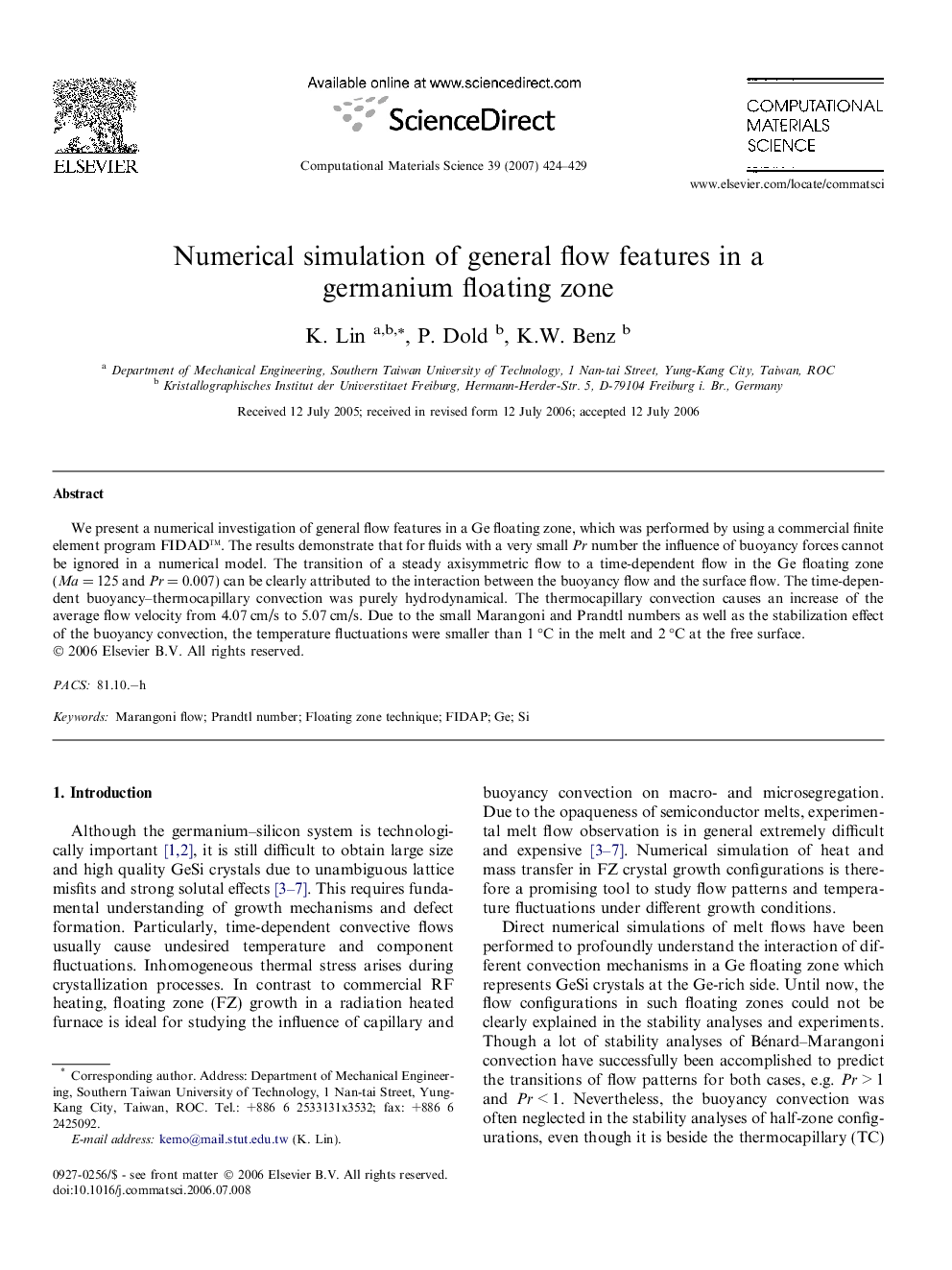| Article ID | Journal | Published Year | Pages | File Type |
|---|---|---|---|---|
| 1564426 | Computational Materials Science | 2007 | 6 Pages |
We present a numerical investigation of general flow features in a Ge floating zone, which was performed by using a commercial finite element program FIDAD™. The results demonstrate that for fluids with a very small Pr number the influence of buoyancy forces cannot be ignored in a numerical model. The transition of a steady axisymmetric flow to a time-dependent flow in the Ge floating zone (Ma = 125 and Pr = 0.007) can be clearly attributed to the interaction between the buoyancy flow and the surface flow. The time-dependent buoyancy–thermocapillary convection was purely hydrodynamical. The thermocapillary convection causes an increase of the average flow velocity from 4.07 cm/s to 5.07 cm/s. Due to the small Marangoni and Prandtl numbers as well as the stabilization effect of the buoyancy convection, the temperature fluctuations were smaller than 1 °C in the melt and 2 °C at the free surface.
